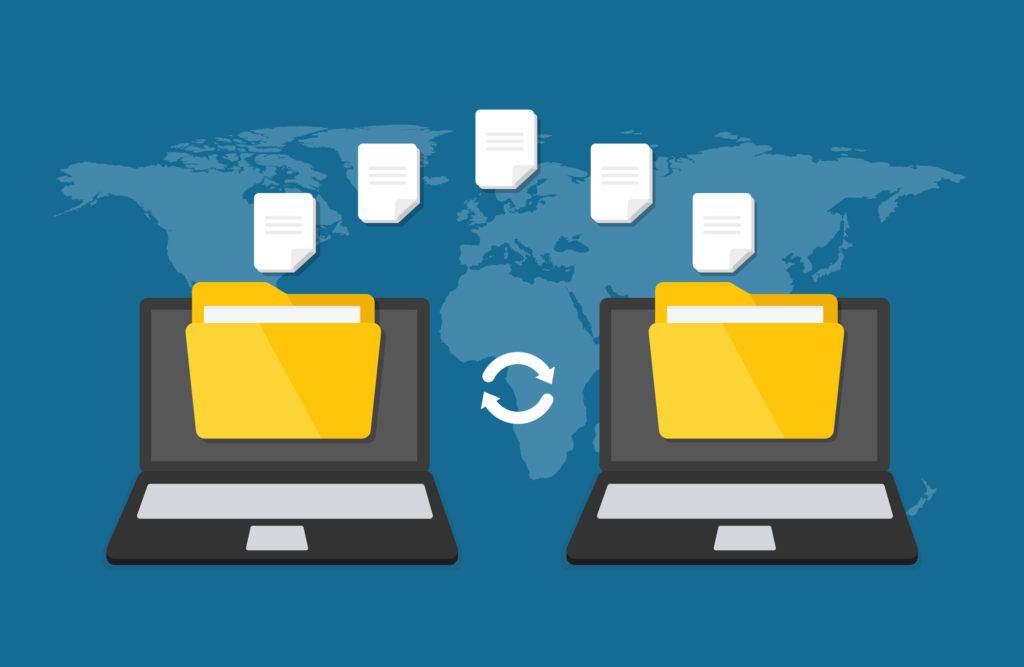Let us Help you Send or Receive Large Electronic Files & Images
If you need to send large files for a work proposal or quote and you are not sure what to do and it seems overwhelming. Here are some ideas to help you. Computer-Wiz can help you set up a system that you can use to send and received large data files and images.
Today we have many ways to send large files – and here are five options to use when you need to send large files.

1. Email – Individual files or Zipped files
Email is a way to send files up to about 10MB – so that usually covers basic PDFs and limited photos (particularly when zipped/compressed). It’s almost instant, and puts the file directly in front of the person with minimal fuss – but it doesn’t work for everyone.
Sending by email can cause some problems so it may not be the best way because large files can fill up people’s inboxes, and can be annoying – particularly if the client is receiving the files on their mobile without a broadband connections. IT departments of many companies block messages over 2-3MB so your message might simply not be received. Sending a Zipped files can help – but can get blocked by spam filters or even get your message (and future messages) marked as spam.
2. WeTransfer Online Service (An Adobe Company)
WeTransfer is a large file transfer sites that are available – there are others as well. These are free services where you can upload files up to 2GB in size, enter the email address of the person you want to send them to and your own email address, and the service then sends that person a message with a link to download the files.
This is a great service – and it’s free – so really there isn’t anything not to love. They also offer a paid version where you can transfer up to 20GB.
The only downside is that some IT departments block their teams from using these types of services, and the files are only available for 10 days or so. The time limit isn’t usually a problem (and you can always resend the files) – but again you will need to check to make sure that your recipient can accept the files first.
3. Dropbox
Dropbox is a storage or accessibility solutions rather than transfer options – but they work really well for that too. Dropbox offers large areas where you can easily store huge files short-term or long-term depending on the amount of storage and type of Dropbox account, but they also give you the option to share those files with other people.
Dropbox gives you a free account with up to 2GB of storage for your files. You can access these files from anywhere simply by logging into your account – but more importantly for transferring files you can simply send people a Dropbox link to give them access to download your file (and only that file). The recipient doesn’t need to have Dropbox on their computer, or even be registered to Dropbox. You can send the person receiving the files a link to download the files.
If the recipient is also a Dropbox user, you also have the option to share a folder with them. That means you can each have a folder on your desktop so both of you can see and add files to that folder. There is also a pro version of Dropbox if you need more storage.
It’s a great service – and again you can pay for a professional version that gives you more storage, and even keeps a copy of every file even if it is deleted, or allows you to download an earlier version of the file if it has been changed.
4. Google Drive
Another option is Google Drive, it works like Dropbox. You can send files by Gmail and if the files are too large for the email send and receive then Google will create a link to a Google drive account to access the files.
5. Use a Memory Stick/Jump Drive
There are still times where the simplest and most practical solution is to put the items onto a memory stick – or even an external hard drive – and simply ship it to the person who needs it.
Typically this will be where one party is having trouble sending or receiving files or the file sizes are just too large. Sending or receiving files can be an issue simply because of broadband problems, or as discussed above, because the IT department has blocked these solutions to protect the organization against anything from pirate content to data security.
Contact us for help with any of your file sending and saving needs.
